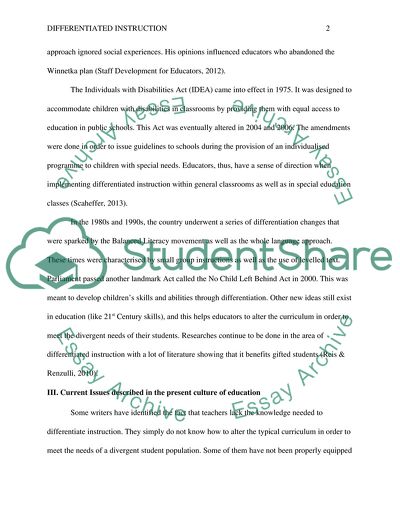Cite this document
(Differentiated Instruction - Teaching Learners with Varying Abilities Essay Example | Topics and Well Written Essays - 2000 words, n.d.)
Differentiated Instruction - Teaching Learners with Varying Abilities Essay Example | Topics and Well Written Essays - 2000 words. https://studentshare.org/education/1810292-differentiated-instruction-teaching-learners-with-varying-abilities
Differentiated Instruction - Teaching Learners with Varying Abilities Essay Example | Topics and Well Written Essays - 2000 words. https://studentshare.org/education/1810292-differentiated-instruction-teaching-learners-with-varying-abilities
(Differentiated Instruction - Teaching Learners With Varying Abilities Essay Example | Topics and Well Written Essays - 2000 Words)
Differentiated Instruction - Teaching Learners With Varying Abilities Essay Example | Topics and Well Written Essays - 2000 Words. https://studentshare.org/education/1810292-differentiated-instruction-teaching-learners-with-varying-abilities.
Differentiated Instruction - Teaching Learners With Varying Abilities Essay Example | Topics and Well Written Essays - 2000 Words. https://studentshare.org/education/1810292-differentiated-instruction-teaching-learners-with-varying-abilities.
“Differentiated Instruction - Teaching Learners With Varying Abilities Essay Example | Topics and Well Written Essays - 2000 Words”. https://studentshare.org/education/1810292-differentiated-instruction-teaching-learners-with-varying-abilities.


